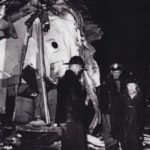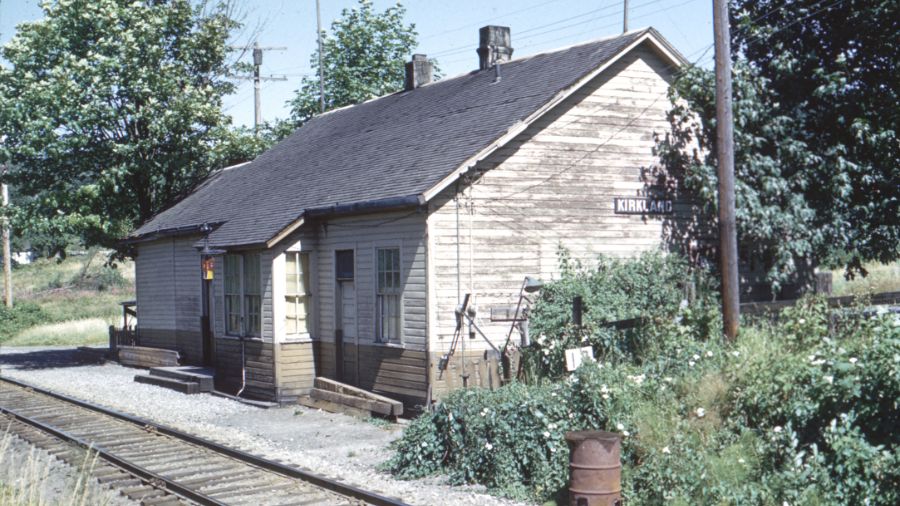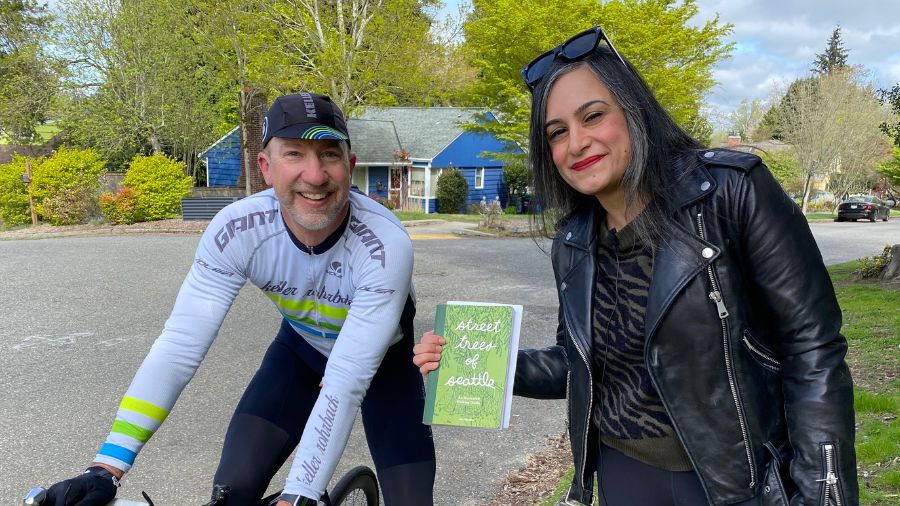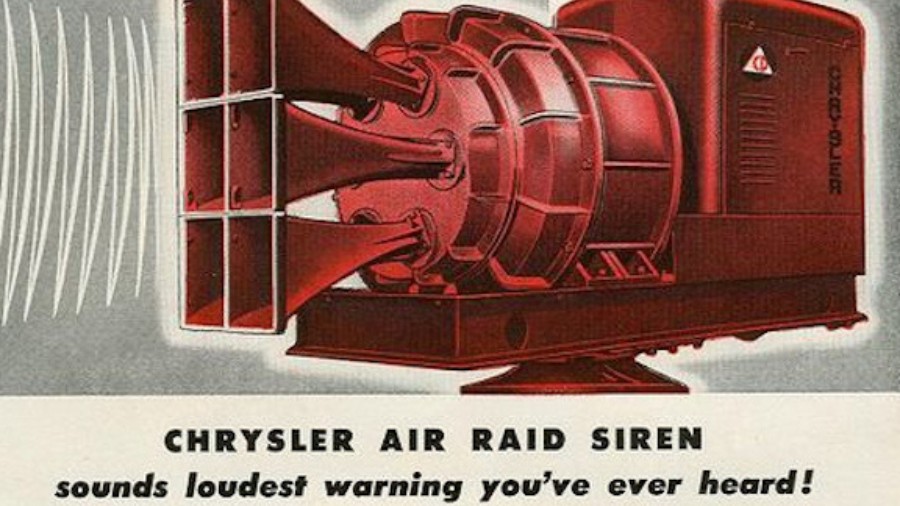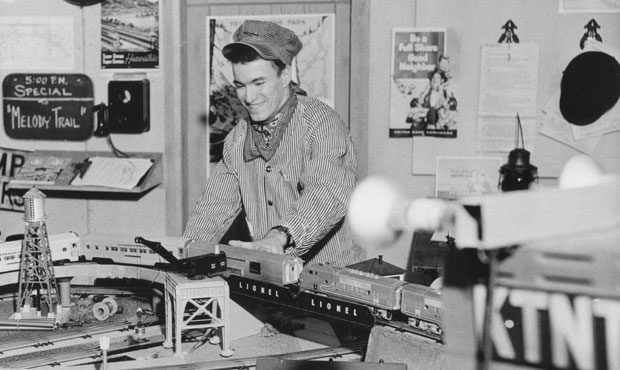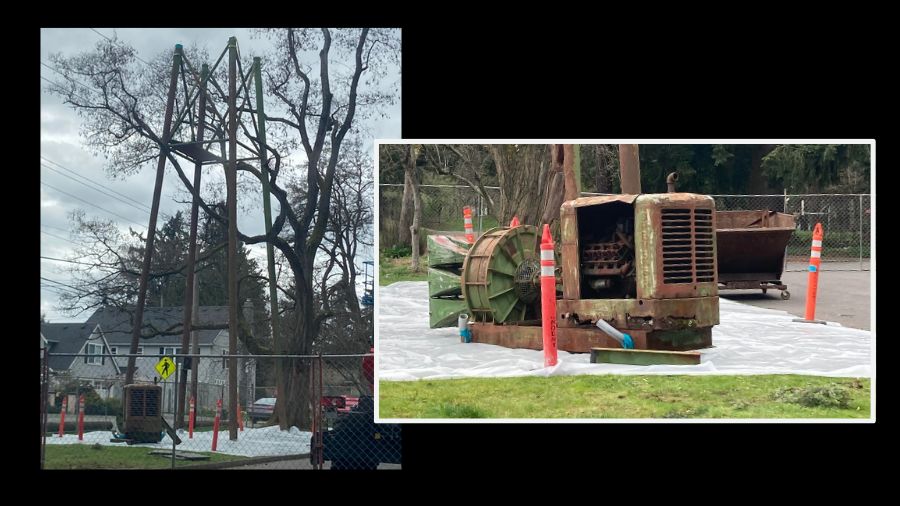Harrowing Burien airliner crash covered up by time
Nov 17, 2022, 4:00 PM | Updated: 4:08 pm
You wouldn’t know anything about it now by observing a typical day at this old family-owned supermarket in Burien.
There’s no monument, and no interpretive signage. Errand-focused drivers come in and out of the parking lot where Des Moines Memorial Way crosses South 120th Street. Oblivious customers hurry up and down the clean and well-maintained aisles. And though she’s lived in the neighborhood for decades, the white-haired lady asking about bean sprouts has no idea that she’s standing on a spot where a deadly tragedy occurred 60 years ago this week.
Bill Knowles owns this Thriftway in Burien’s Boulevard Park neighborhood, and his family has been in the grocery business at this corner since the 1920s. The original location was across the street from where Knowles’ father and uncle built the Thriftway in 1958.
Celebrating the life of Seattle’s favorite ‘Pepperoni Pusher’
And it was on a snowy November night in 1955, exactly where this Thriftway now stands, that an airliner full of American soldiers headed home for Thanksgiving suddenly fell from the sky.
Gene Casey was there that frozen night in 1955. It was just after midnight on the morning of Nov. 18. Casey was 19 years old, and he didn’t think that the plane, a World War II-era, four-engine DC-4 operated as a charter by Peninsular Air Transport, was going to crash.
“I saw a car on the highway there going under the plane,” Casey said. “And I thought, ‘Wow, this is like a Hallmark Christmas card with the snow coming down, and halos around the light.'”
Patricia Anderson was there, too. She’s 93 years old now, but vividly recalls what happened. Anderson, whose last name then was Renard, was asleep with her late husband, Don, in their one-story house on Des Moines Way.
“I remember I heard this noise and I jumped up and looked out the window and saw a ball of fire,” Anderson said, “and I thought it was the house [on fire].” As Anderson ran from the bedroom and down a short hall to the kitchen to call the fire department, she had no idea what had happened.
As she was dialing, Anderson looked through a back window and saw three men standing outside her house near the family dog kennel. She thought they were Samaritans who’d come to borrow her phone to call for help.
“I thought, ‘Oh, they must have seen the fire,’ and they were coming over to see if they could telephone,'” Anderson said. “Anyhow, I opened the door and there were three soldiers, and two of them were holding up the other one.”
The DC-4 had 74 people aboard, including a pilot, co-pilot, and steward when it took off from Boeing Field just before midnight. It snowed much of the day and the flight was delayed several hours. The delay wasn’t because of conditions at the airport, it was because the passengers had a hard time getting to Boeing Field on Seattle’s snowy, gridlocked streets.
All Over The Map: World War II Kirkland yearbook mystery
Most of the passengers on the airliner were soldiers who arrived in Seattle earlier that day on a troop ship from Korea. The Korean War had been over for awhile, but the American military presence was still substantial. Thanksgiving was coming, and the men on the plane were headed east to homes and families all across the country.
An investigation by the Civil Aeronautics Board would later reveal that maintenance errors before the flight had damaged one of the plane’s four propellers, and clerical mistakes had meant that critical pre-flight engines tests that would’ve detected the errors had been skipped. Witnesses on the ground later reported that they could tell something was wrong by the high-pitched whining sound made by the damaged propeller as the plane climbed into the sky.
The plane had taken off to the south and gained altitude normally, but then the pilot and co-pilot knew they had a problem when they couldn’t adjust the angle of the propeller on the engine on the far-right hand side of the four-engine plane. As they struggled to gain control, the plane headed southwest from Boeing Field and began to lose altitude.
The pilots were trying to crash-land the plane in an uninhabited area when a wing struck a tree and then a utility pole on South 120th Street. Then the nose went up, and the plane clipped the Montgomery house on the south side of South 120th Street, where a laundromat now stands. The airliner then crashed and broke apart in a wooded area behind a row of three houses on Des Moines Memorial Way.
Because it was airborne for only a few minutes before it crashed, the DC-4 was loaded with fuel for its long flight, and it burst into flames as it was breaking apart. As the airliner crashed, the tail section broke off, creating an escape route at the back of the fuselage that also took many fleeing survivors right through the flames.
Of the 74 people on board the plane, 28 died in the crash or the fire, including an employee of the airline who was moving his family cross-country. The man’s wife and three children were among the 46 who miraculously survived the crash and the fire.
So was 19-year-old Gene Casey.
“I really thought [the pilot] was going to turn around and go back to the airport. I didn’t think we were gonna crash,” Casey said, now 79 and retired, living in Florida. “I didn’t really think we were gonna crash until I started seeing houses and sheds and garages, and that highway with a car on it.”
In the midst of the flames and explosions and chaos, the most incredible part of this story is what Patricia Anderson and her husband and their neighbors did next.
As they waited for emergency crews to arrive, Anderson invited those three injured soldiers out of the freezing November night into her house. Then, she and her husband Don worked together and brought a total of 16 survivors to take shelter in their living room and kitchen.
While Don was out back helping injured soldiers make their way from out of the woods and into the house, Patricia Anderson got out blankets and towels and turned the modest home into a makeshift hospital.
When emergency workers arrived, they triaged the survivors and began transporting the most badly injured. Since there weren’t enough ambulances on that icy night to transport everybody at once, Anderson’s home was a warm and dry resting place for the soldiers as authorities made multiple trips between the crash site and nearby hospitals.
And right next door, just one house to the north, the same heroic efforts were going on at the home of Charlie Platt and his wife Nicky, who also brought soldiers into their living room and kitchen. One of the men the Platts helped was Gene Casey.
Casey initially assumed there were no other survivors.
“I thought everybody was dead. I did not know anybody was alive cause there was nobody,” he said. “The plane was empty, the grounds were empty. There was nothing. It was just quiet except for the fire.”
More from Feliks Banel: Elder statesmen of Washington weigh in on current politics
For takeoff, Casey had been sitting near the back of the plane in the tail section on the left side. Casey was looking out the window of the plane as it made its deadly descent, admiring the snow and the lights. When the wing struck that tree and utility pole, it took Casey by surprise. He says he saw the man sitting next to him get decapitated by a piece of the wing that pierced the cabin.
When the plane nosed up and the tail section hit, the tail section broke off with Casey in it, and somehow he survived the crash and the fire. He blacked out, but woke up still belted into his seat.
Casey says that after he regained consciousness, he unbuckled his seatbelt and got up. His arms were badly burned, his collarbone was broken, and he had a serious head wound. As he made his way out of the wreckage, he heard another soldier calling out for help from down on the ground. Casey says he knew that if he got down to help the man, he might not be able to get back up again. So Casey crouched down and offered his badly burned arm to the other soldier. Somehow, the other man was able to get up, and the two, along with a third soldier, were the last to leave what was left of the plane. The three headed across the snowy ground for the Platt’s house.
“I knocked on the door and the lady let us in,” Casey said. “And she looked at me and screamed. She took the other guy and steered him back to the kitchen and she laid me down on the floor, and I started shaking really bad.”
Seeing other soldiers in the Platt house was the first time Casey knew that anybody else had survived.
Patricia Anderson and her neighbors never received any kind of recognition for helping the crash survivors, and she says that they never expected to.
“It was just something you do. Anybody would’ve done it, not just us,” Anderson said.
The father and uncle of Thriftway owner Bill Knowles helped out, too.
“My dad got the phone call at home and he came up here with my uncle. They helped with body recovery and all the stuff that they had to do. Both those guys were World War II vets, so they were used to doing stuff like that,” Knowles said.
Incredibly, nobody in the neighborhood was injured or killed, though the Montgomery home was damaged when struck by the plane. The back of the Dearing house, just north of the Platts, caught fire. Authorities believe a fuel tank from the DC-4 exploded and showered the Dearing home with burning fuel. The five Dearing kids, ranging in age from 8 years to 9 months, and their mom, all escaped the flames.
The landscape at Des Moines Memorial Way and South 120th Street has changed a lot since 1955, but it’s still easy to picture where the DC-4 crashed. The home where Patricia Anderson comforted soldiers is still standing, though Anderson moved away in 1965. Both the Platt and Dearing homes were demolished soon after the crash, and the land excavated to make way for Bill Knowles’ father and uncle to build the Thriftway.
The crash had long-lasting effects on Gene Casey, who spent four months in an Army hospital recovering from the burns he suffered. Casey never wanted to fly again, though he did a few times when he had to for his job. He says he hasn’t flown for 20 years. There was talk of Casey being awarded a medal for bravery for helping the other soldier, but somewhere along the way, the paperwork was lost and Casey was never officially honored.
Patricia Anderson’s daughter, who was 9 years old in 1955, is still afraid of any kind of fire, even in fireplaces. But Anderson is matter-of-fact about the impact the crash had on her and her family.
“We didn’t dwell on it. It was something. It happened,” Anderson said. “You have to move on. You can’t let anything keep you from actually moving on. So we treated it like it was. It was a very bad scene, but you finally get over these things. You’ve got to.”
While Gene Casey is disappointed he never received formal honors for rescuing the injured solider from the plane crash, he does credit his time in the Army for straightening him out. He says that growing up in Chicago in the early 1950s before he joined the service, he often got into trouble — nothing serious — but nothing he’s proud of now. During his teenage years, Casey’s parents would frequently be on the receiving end of phone calls from their son, in trouble again for one thing or another and needing to be bailed out.
As Casey lay wrapped in bandages and undergoing treatment for his injuries at the old Standring Hospital in Burien a few hours after the crash, a newspaper reporter helped him make a long-distance call. They tried to reach Casey’s parents in Chicago to let them know that their son had survived the crash. The phone rang, and his mother answered.
“I said ‘Hi, mom,’ and she says, ‘What did you do now?'” Casey said, recalling earlier conversations when his mother had reason to leap to similar conclusions.
“I was always in trouble,” Casey said, laughing. “I think she thought I was flying the damn thing.”
Editor’s note: Special thanks to Boulevard Park residents Harland Eastwood and Alice Takashima for their earlier research on the 1955 crash.
You can hear Feliks every Wednesday and Friday morning on Seattle’s Morning News with Dave Ross and Colleen O’Brien, read more from him here, and subscribe to The Resident Historian Podcast here. If you have a story idea, please email Feliks here.






